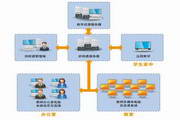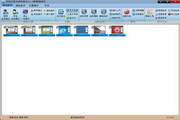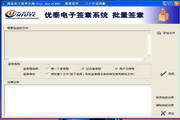It can mainly achieve the following functions:
1. Unified management functions of the Education Bureau:
The Education Bureau can automatically make statistics on the usage of computer rooms in each school within its jurisdiction, so that the system can grasp the usage of computer room equipment in each school. You can also log in to the servers of each school at any time for remote screen monitoring and view the students' class process in real time. (optional)
2. Regular teaching functions:
Smooth screen broadcast; various auxiliary teaching functions such as video playback, video live broadcast, electronic drawing board, electronic roll call, electronic hand raising, answering questions, homework submission, screen recording, seat layout, file transfer, message sending, etc.; temporary lock screen control, Management functions such as temporary Internet access control, temporary Internet disconnection control, remote wake-up, shutdown and restart.
3. Filtering of bad information:
It has multiple filtering methods such as real-time filtering of web content keywords, bad URL filtering, bad application filtering, and IP filtering. The software has a built-in bad information filtering database, and teachers can set unified settings for all student computers by manually adding bad URLs, trusted URLs, custom keywords, IP address segments, etc.
4. Classroom management:
The software has dozens of built-in behavioral modes, which can be directly applied in each computer room of each school according to the actual situation. At the same time, teachers can also customize settings for different students and different machines according to different time periods. The customized settings include real-name login and disconnection lock screen. , control Internet access, restrict the use of USB flash drives, prohibit online chat, prohibit games, disable online neighbors, etc.
5. Log system:
The server can automatically save the website records, screenshots and system logs visited by students. Teachers can check students' computer usage from both the machine and the user.
6. Network hard drive:
The server provides network hard drive storage space. Students can store their unfinished homework on the private network hard drive. It supports uploading files and folders by dragging the mouse with the mouse without compression. Teachers can directly view the contents of all students' network drives.
7. Quiz in class:
Teachers can conduct in-class quizzes at any time to examine students' mastery of knowledge points. They can count each student's time to complete each question and the accuracy of each question, and save student test scores. It has a complete feedback mechanism, and the server can conduct periodic statistical analysis according to time periods and grade subjects.
8. Information exchange:
Teachers and students can communicate with each other through text, pictures, and voice. They can use the shared presentation window to display PPT, documents, pictures, videos, flash files and other materials. They can use the shared electronic drawing board for collaborative operations, and support screenshots and one-click transmission. data and other functions.













































it works
it works
it works